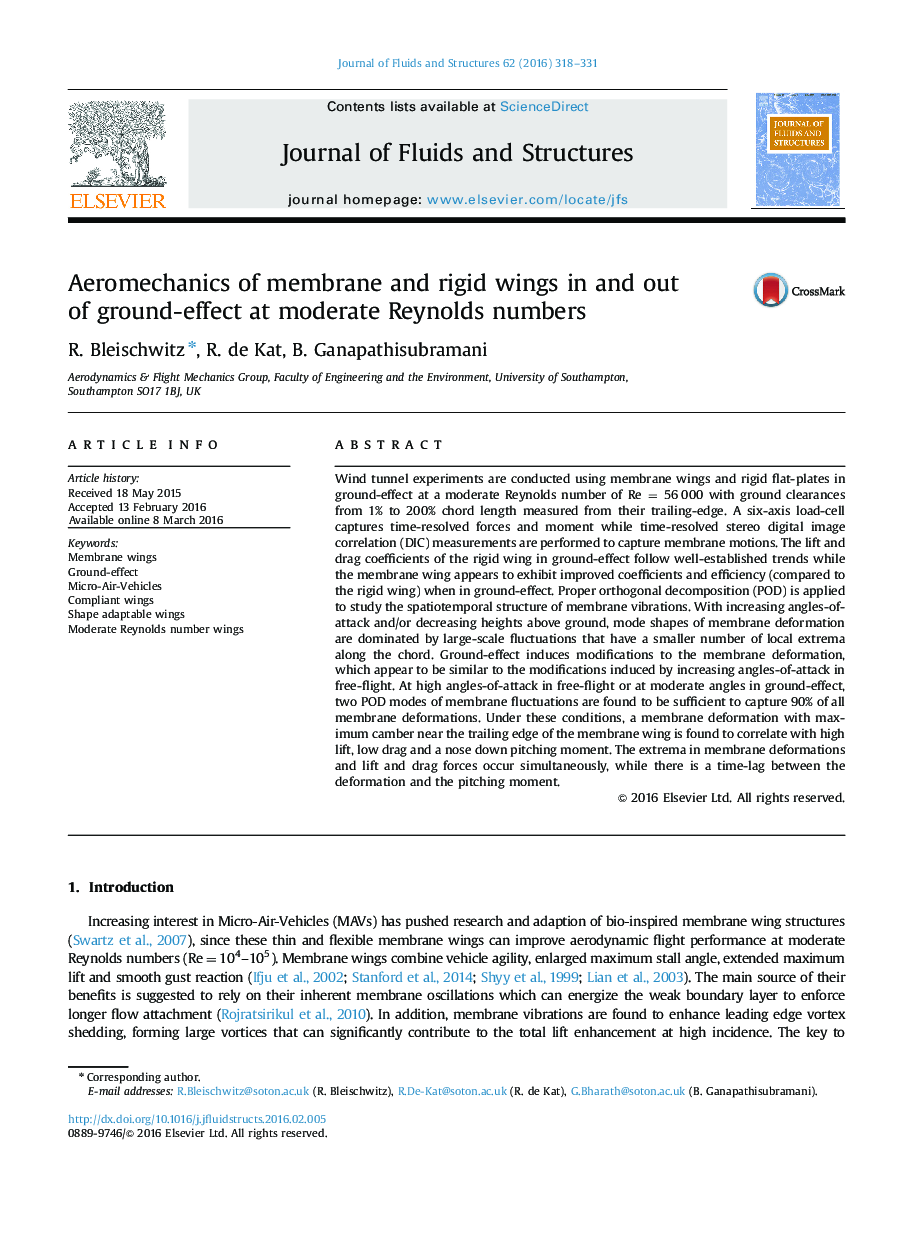| Article ID | Journal | Published Year | Pages | File Type |
|---|---|---|---|---|
| 792275 | Journal of Fluids and Structures | 2016 | 14 Pages |
•Cambering of membrane is beneficial in ground-effect at higher incidences.•Membrane wings in ground-effect exhibit higher range efficiency to rigid wings.•Reducing height-over-ground modifies membrane deformation modes.•Two POD modes suffice to capture 90% of membrane fluctuations at peak lift.•Instantaneous rearward camber correlates with high lift, low drag and pitch down.
Wind tunnel experiments are conducted using membrane wings and rigid flat-plates in ground-effect at a moderate Reynolds number of Re = 56 000 with ground clearances from 1% to 200% chord length measured from their trailing-edge. A six-axis load-cell captures time-resolved forces and moment while time-resolved stereo digital image correlation (DIC) measurements are performed to capture membrane motions. The lift and drag coefficients of the rigid wing in ground-effect follow well-established trends while the membrane wing appears to exhibit improved coefficients and efficiency (compared to the rigid wing) when in ground-effect. Proper orthogonal decomposition (POD) is applied to study the spatiotemporal structure of membrane vibrations. With increasing angles-of-attack and/or decreasing heights above ground, mode shapes of membrane deformation are dominated by large-scale fluctuations that have a smaller number of local extrema along the chord. Ground-effect induces modifications to the membrane deformation, which appear to be similar to the modifications induced by increasing angles-of-attack in free-flight. At high angles-of-attack in free-flight or at moderate angles in ground-effect, two POD modes of membrane fluctuations are found to be sufficient to capture 90% of all membrane deformations. Under these conditions, a membrane deformation with maximum camber near the trailing edge of the membrane wing is found to correlate with high lift, low drag and a nose down pitching moment. The extrema in membrane deformations and lift and drag forces occur simultaneously, while there is a time-lag between the deformation and the pitching moment.
